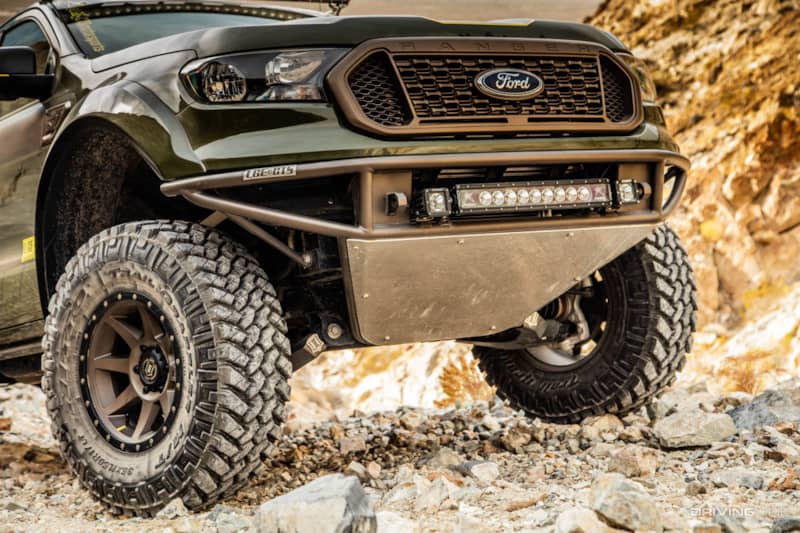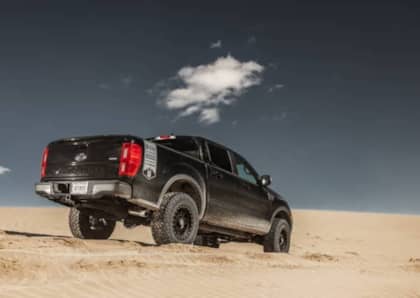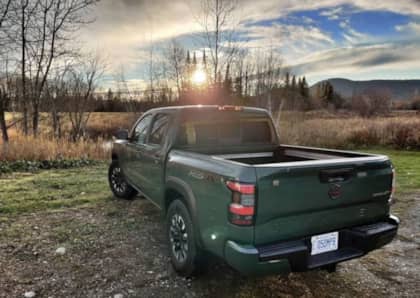The 1982-1992 Ford Ranger Helped Revolutionize Compact Pickup Trucks
When the Ford Ranger arrived on the scene in the early '80s, it was hot on the heels of the Chevrolet S-10 and GMC S-15, a pair of compact pickups that, together with the Ranger and the soon-to-hit-showrooms Jeep Comanche, would revitalize the truck scene in America. After a decade or so of importing Japanese-built pickups and rebadging them for domestic use, Detroit was finally stepping up to the plate and building its own entry-level haulers.

The Ranger represented a major change for small trucks, a model that was more frugal than its full-size F-150 sibling yet still useful when it came to payload, towing, and off-road fun. The first-generation Ford Ranger established the template for the brand's compact pickup efforts for the next 30 years, and is on the verge of being a collectible for truck fans eager to snag an example of this Rad-era legend.
Bringing It Home
The Ranger badge was familiar to Ford fans well before it was pasted onto a pint-size pickup, as the automaker had employed the term as a trim level on a number of different trucks dating all the way back to the 1960s (with an even earlier 1950s usage by the defunct Edsel brand).

The compact truck's platform itself had been in development for close to 10 years, having started in 1976 as part of Ford's effort to wean itself off of the Mazda-sourced Courier compact truck. 'Project Yuma' was in some ways a reaction to the energy shocks that reverberated throughout that decade, boosting fuel prices and forcing the Big Three to take a long, hard look at down-sizing engine displacement and vehicle sizes.

This was reflected by the level of aerodynamic testing that prototype Rangers underwent, with every little curve on the edge of its box-like shape helping it cut through the atmosphere that much more efficiently.

Ford was also certain that as long as it was legitimately useful, and comfortable to drive, the Ranger would be seen as more than just 'half a full-size' by truck fans, who were likely willing to cough up a reasonable price for a pickup that fit into their lifestyle (and their garage).
It's a corporate attitude that continues to this day with the modern mid-size Ranger.

Basic, Useful, Popular
The 1982 Ford Ranger went on sale very early in 1982, in part as a response to the Chevrolet and GMC efforts that threatened to soak up initial demand. The initial product was far from rushed, however, and provided a strong upgrade over the Courier.

The Ranger came with the choice of two cargo bed lengths (six feet or seven feet), as well as either a 73 hp, four-cylinder engine or a 115 hp V6. Each of these drivetrain configurations remained in the mix over the course of first-generation truck's lifespan, eventually growing to 100 hp and 160 hp, respectively, as larger displacement, fuel-injected models were added to the order sheet.

Early trucks were also offered with a pair of turbodiesel engines (manufactured by Mazda and Mitsubishi, respectively), but they proved to be unpopular with buyers.

Overall, the Ford Ranger was larger than the Courier but about a foot and a half shorter than the F-150, and not nearly as wide. By 1986 an extended cab version of the truck joined the single-cab, stuffed with a pair of jump seats that were appropriate only for children and limber teenagers. Interior trappings were modest, but in keeping with what you could find in an F-Series of the same year, and Ford made sure to add four-wheel drive and both manual and automatic transmissions onto the order sheet.

Ford also had a secret weapon: the Ranger S, which arrived as a 1984 model and was targeted at contractors and fleets looking for a stripped-down workhorse. It wasn't long before the Ranger S trim's utilitarian personality and extremely affordable price tag had created a steady revenue stream that would last the rest of the truck's days on the market.

By 1988 the Ranger's momentum had surged to 300,000 units sold per year, and for '89 Ford rewarded its small truck faithful with a refresh that gave the pickup more of the F-150's visual character (especially up front), but kept its chassis details largely the same. Continuing to offer its twin I-beam front suspension, the Ranger rode somewhat smoother than other compact trucks on the market, while still providing a durable enough design to get the job done.

Four-wheel drive models featured a 'Twin Traction beam' variation on this setup, with both designs lifted from the F-Series.
Still Plugging Forward Through The '90s
The Ford Ranger's original design was so successful that when the second generation truck appeared in 1993, it retained much of the same underpinnings and very similar drivetrain options. To be sure, the rounded body work that replaced the rectangular Ranger's beginnings was pure '90s, but Ford realized that there was little need to re-engineer a good thing when its initial effort had already been a home run for the brand.

Current Value and Availability
Today, it's not always easy to find an early Ranger in good, clean condition. These trucks hail from a time when most buyers typically used their pickups on the trail, as tow vehicles, or at the job site, rather than as commuters, and as such they were often ridden hard and put away wet (or in northern states, soaked in road salt and disposed of after four or five years of corrosion caught up to them).

Still, with their simple construction and even more basic mechanical details, the first-generation Ford Ranger presents an appealing, and affordable, entry into the classic truck world. With so many models built, and with parts sharing between the Ranger, its Bronco II sibling, and even the second-gen trucks broadening the pool of support, it's not difficult to keep one of these vehicles on the road—or even ask one to continue earning its keep decades after it first hit the highway.











